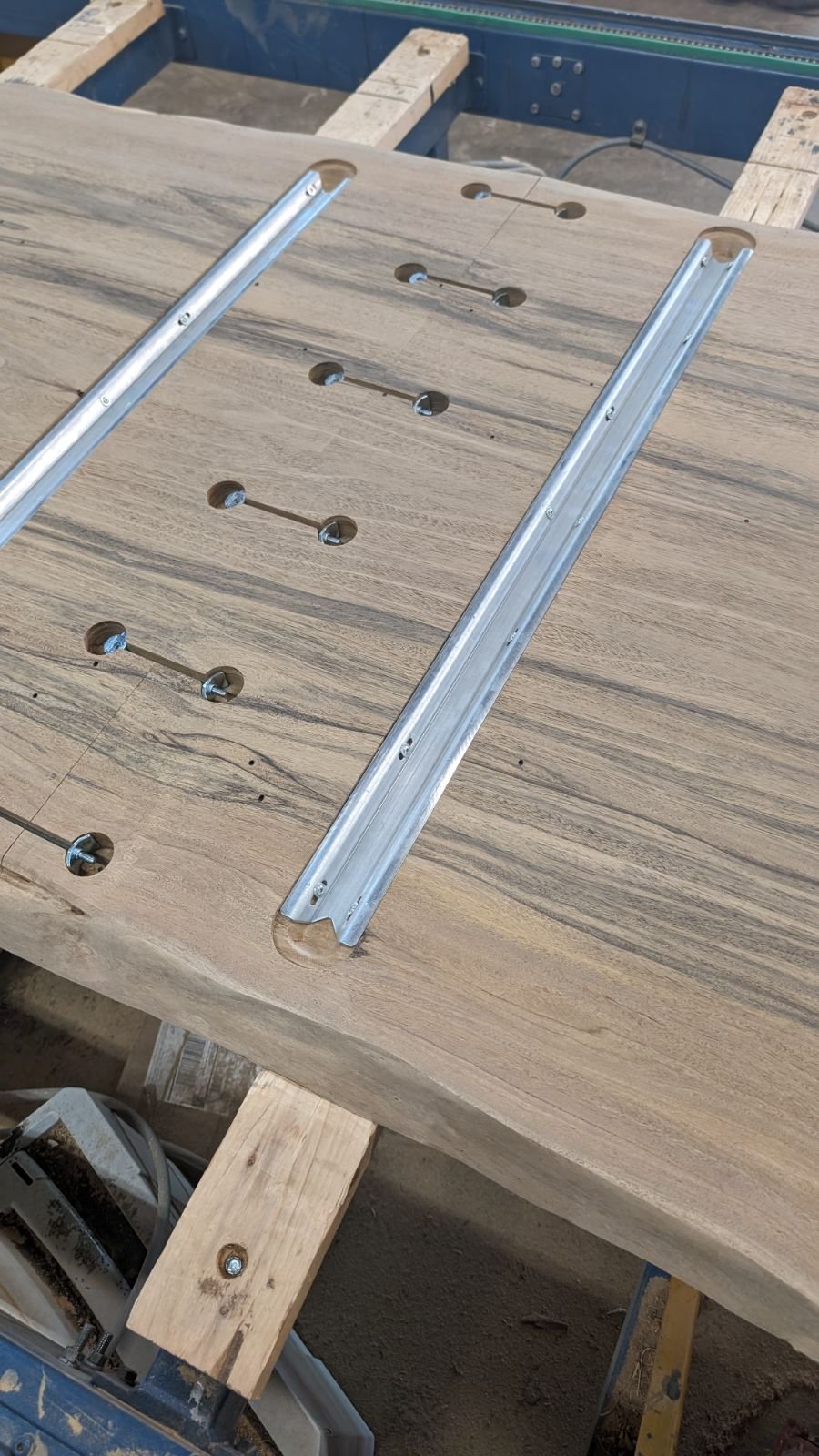Giving Trees A Second Chance
Domestic Species
Our live edge slabs are carefully selected from trees that have been harvested due to rot, disease, or age. These unique pieces of wood often present a challenge, as they can contain large voids that need to be stabilized. Thanks to modern techniques, we can now preserve and revitalize these slabs, giving them a second life. Where these once would have become firewood, they are now transformed into generational works of art that people can cherish for years to come.
Most of our domestic species are sourced from walnut orchards in Northern California, the forests of the Pacific Northwest, or the mountains of New England. Each tree has a story to tell, with materials embedded within it that speak to its history. We often uncover remnants of the past, such as metal fragments from old signs, fencing used for livestock, and even bullets left by hunters. These traces of history add depth and character to each slab, making every piece truly one-of-a-kind.
Exotic Species
Sustainable harvesting of live edge slabs from tropical and exotic wood species is an essential practice that helps preserve delicate ecosystems while providing artisans and consumers with high-quality materials. To ensure responsible harvesting, each country that produces tropical hardwoods enforces strict regulations, and the wood is typically harvested under government-permitted, legal frameworks. These permissions are carefully monitored and regulated through permit systems, where logging companies must adhere to strict guidelines on the amount of wood that can be harvested, the method of extraction, and the reforestation efforts required afterward. For example, countries like Brazil, Indonesia, and Costa Rica have implemented systems such as the Forest Stewardship Council (FSC) certification, which ensures that timber is sourced from well-managed forests that meet high environmental, social, and economic standards. These programs help to prevent illegal logging, reduce deforestation, and protect biodiversity. Additionally, governments may impose restrictions on logging in certain areas or for specific species to safeguard vulnerable habitats and maintain the balance of local ecosystems. By adhering to these sustainable practices, the harvesting of exotic wood can continue to support both local economies and environmental conservation.
This is your table and you control every detail.
Lets collaborate and design something that reflects your style.
Color Options
Design Process
Customer Experience
About Us
Construction
Size Guide
Samples
In-Stock
Showroom













